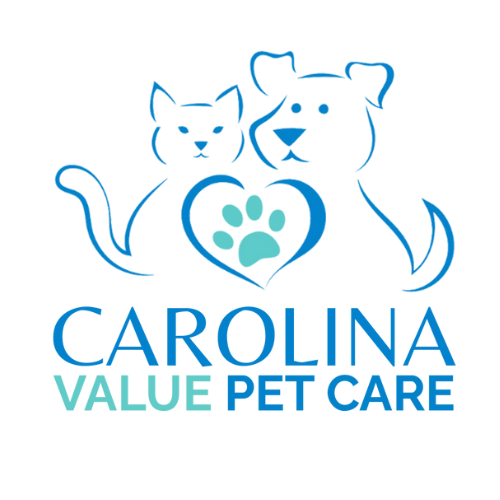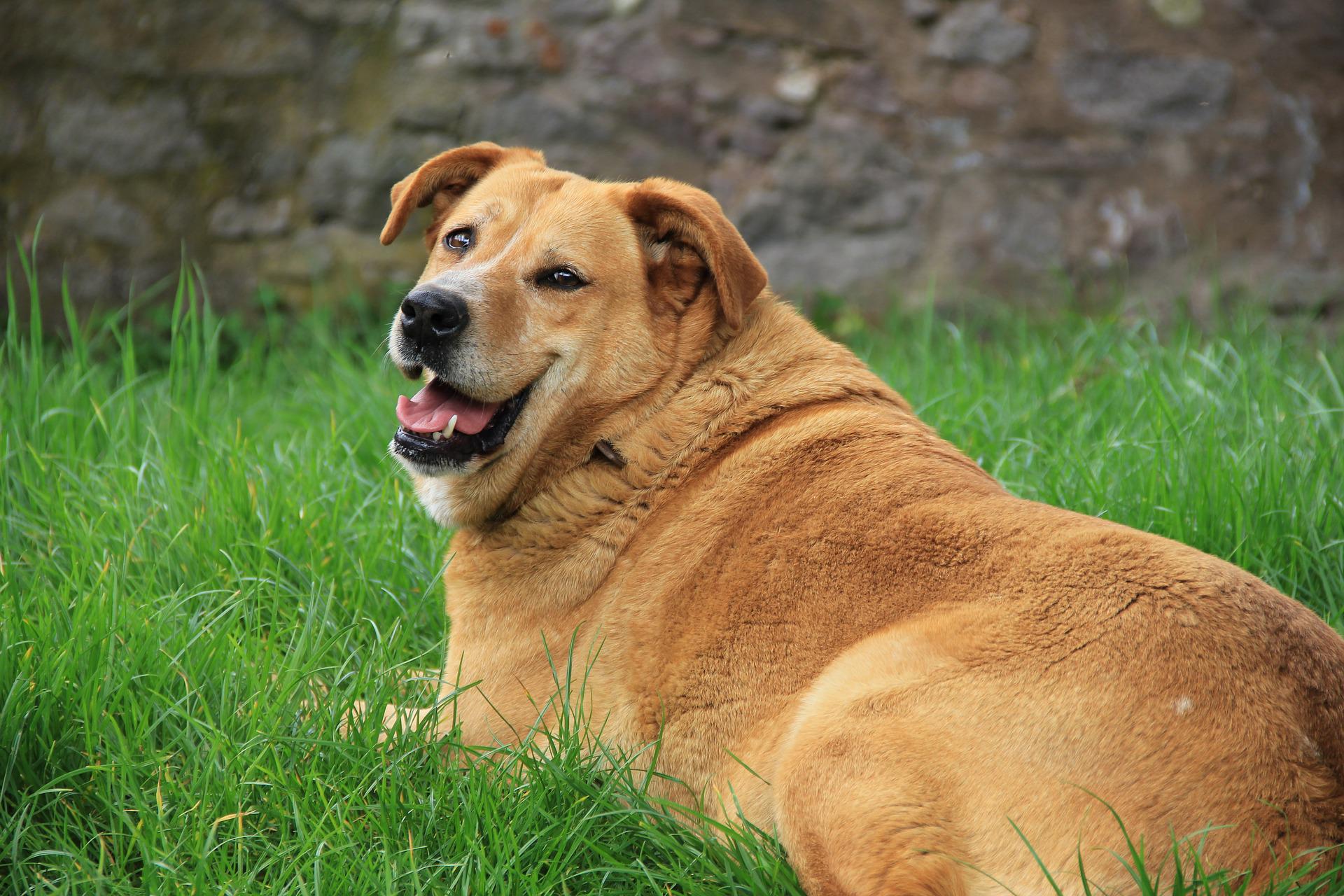There is no “one size fits all” weight-loss strategy for pets (or for people). Start with the basics listed below and then experiment if necessary. PLEASE stop killing your pet with kindness! We know very well the hazards of making poor dietary choices in people. But your pet doesn’t have a choice ~ they will eat what you give them. So, for their benefit, choose wisely. They will be healthier and happier and live longer and better lives.
? Feed him/her for their DESIRED / Target bodyweight … NOT their current, overweight body weight. What does this mean? If you have a 35 lbs dog that should weight ~25 lbs, you need to look at the bag of dog food you are feeding and see what the recommendation is for a 25 lbs dog … then feed that quantity. The caloric density of every food is different. Higher quality foods require a smaller quantity of food (a good way to compare the quality of different foods, by the way).
? Bags of food will often give a range of how much to feed (ex. 1 1/2 to 2 cups/day). It’s always best to feed the lower amount listed.
? If you cannot determine the correct amount to feed your dog or cat, use these formulas to help calculate the proper amount to feed. Remember to feed for the DESIRED or TARGET weight … not what they weigh right now!
DAILY CALORIES for DOGS: (TARGET Body weight in kg X 30) + 70 Ex. A 38 lb dog that should weigh 30 lbs: 30 lbs ÷ 2.2 = 13.6 kg … 13.6 X 30 = 409 … 409+70 = 479 calories TOTAL per day!
DAILY CALORIES for CATS: (TARGET Body Weight in kg X 30) + 70 x 0.8 Ex A 15 lb cat that should be 12 lbs: 12 lbs ÷ 2.2 = 5.5 kg … 5.5 x 30 = 165 … 165 + 70 = 235 … 235 X 0.8 = 188 calories TOTAL per day!
? The recommended quantity to feed is the recommended TOTAL per day. This total amount recommended assumes you are not feeding anything else. However, if you’re going to give treats or ‘table food’ (see my advice below), then give less kibble!
? CAT ALERT!!! FACT: We now know that DRY CAT FOODS are responsible for obesity in cats! Why? The high carbohydrate quantity in dry cat food is making many cats fat, and putting many at risk of becoming diabetic. Seriously. I STRONGLY encourage cat owners with overweight cats to start feeding canned cat foods. I know they are not as convenient or cheap as dry food, but your cat’s health matters enough to switch to canned food … or at the very least, start mixing canned food together with dry.
? There is a difference between an ‘even’ cup of food and a rounded, heaping cup of food. If you give a ‘heaping’ cup of food, then you may be adding ~4 to 10 extra pieces of kibble above the recommended amount. Over the course of a year, that’s an extra 1500 to 3500 pieces of kibble per year! That’s a lot of unwanted calories.
? With dogs, get rid of the MilkBone-type treats!!! First, they DO NOT HELP KEEP TEETH CLEAN! Worse, they add a lot of unwanted calories + have no nutritional value at all! Likewise, trash the Pupperonis, LiverSnaps and other the other overly-processed, high calorie bombs that come in a box or bag!
? If you insist on giving your dog some treats, that’s fine. I give them to my dogs every day. So what do I give??? Fresh raw or steamed veggies! Carrots … broccoli … green beans … zucchini … cherry tomatoes … just try something. Will they like them? Beats me. But you won’t know until you try, right?
? What about giving fruits? Focus on giving vegetables. And NEVER give grapes or raisins since they can be very poisonous to some dogs (and we don’t know which dogs … so don’t take a foolish chance and find out the hard way).
? Too many pet owners get hung up on giving “table food”. We all know in our heart of hearts that there is “good” table food … and “bad” table food. You know the difference. If you know that something is bad for you, don’t give it to your dog. If you know something is good for you (vegetables!), then feel free to give it. But remember to count the calories.
? It should go without saying that activity and exercise are necessary … not only for burning calories, but also for boosting the body’s metabolism (ability to use and burn calories) as well as maintaining joint health, mobility and flexibility.
? Also, different diets work for different pets in different ways … just like people. You may have to experiment and be dedicated and disciplined to trying something consistently for a minimum of 3-4 months. But don’t starve your pet into weight loss ~ let’s be sensible and give it time. It took months to years to get overweight … be patient when losing weight.
? Oftentimes, the most difficult part of trying to get your pet to lose weight are other family members who refuse to get involved … or keep giving treats. You may have to have ‘the talk’ to get them on board with the weight loss plan.
? There are factors beyond diet and exercise that can be responsible for weight gain. With both female and male dogs and cats, once they’ve been spayed or neutered, they may gain weight. Ideally, wait to spay or neuter when they are ~1 yr old.
? If you and your family are totally dedicated to getting your dog to lose weight, but you aren’t having any success after ~3 months, then it could be a Thyroid deficiency (hypothyroidism), which can be tested with a blood sample at a full-service veterinary clinic. If your dog has a thyroid deficiency, there is medication (twice daily pills) that can manage the problem. We rarely see hypothyroidism in cats.
Dr. Bob Parrish / www.CarolinaValuePetCare.com / June19

